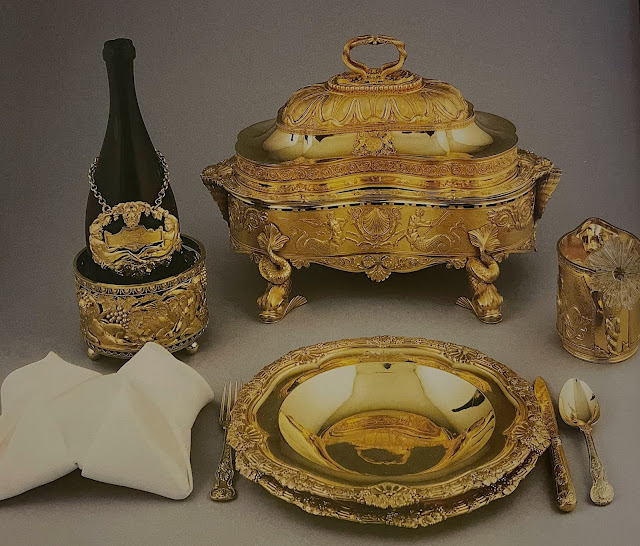On Regency Era British Flatware and Its Supporting Manufacturers
In the earlier part of the century, the extravagant taste of the Prince Regent and his love of food reflected itself in the gifts he gave to members of his court and to his friends. Beautiful sets of cutlery, such as oyster knives, personalised with his crest and contained in a sumptuous box lined with tinsel paper, were among his favoured presents. The box- making industry, as part of the expanding gift business, was one of the most important ancillary trades in Sheffield. A number of companies made boxes for sets of dessert knives and forks, given as presents but seldom used by the recipient
Carving sets were another popular nineteenth-century gift. In earlier times to be assigned the office of Carver' at a rich man's table was considered a honour, a position of great importance which required skill and dexterity. It was a tradition which lasted until quite recently, although to a much lesser degree, when even in modest households the task of carving the joint (however small) on a Sunday was a ritual accomplished by the head of the family.
The market for carving sets flourished in the nineteenth century and once again the Sheffield cutlery trade met the demand, manufacturing attractive cased sets of carving knife, fork with patented finger-guard and sharpening hone and sometimes specialist game carvers. These sets, often of huge proportions, would have handles of stag or ivory, although later on in the century this was substituted by Ivorine, a trade name for Celluloid. Commemorative carving sets made for the upper end of the market, had ivory handles often carved in the likeness of Victoria and Albert, or of other famous people, such as Wellington and Shakespeare. – From “British Cutlery, An Illustrated History of Design, Evolution and Use”, York Civic Trust, 2001
Reminder: We have a free webinar on Dining According to Hollywood and Dining Etiquette as Presented on Film! You can watch it live on September 23rd at 4:00 pm PST (Pacific Standard Time). We have a limited number of viewers who can attend via Zoom, however, if you are registered and cannot watch the event live, you’ll be sent a video link to watch a copy at your leisure. Link to the Free Webinar –– https://events.humanitix.com/dining-according-to-hollywood-the-art-of-dining-on-film Please email any questions to: theetiquettechannel@gmail.com
🍽Etiquette Enthusiast, Maura J. Graber, is the Site Editor for the Etiquipedia© Etiquette Encyclopedia

